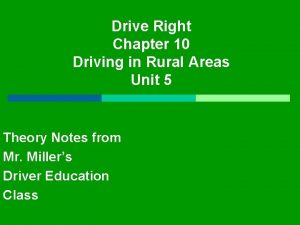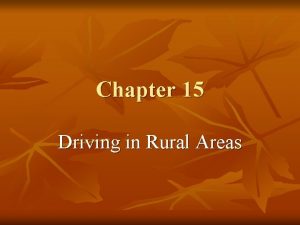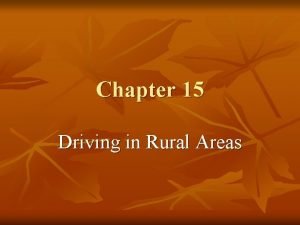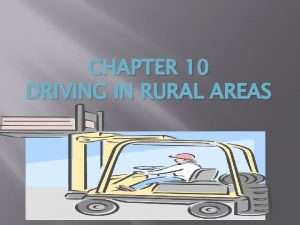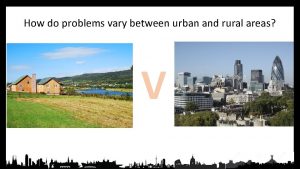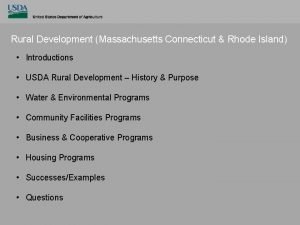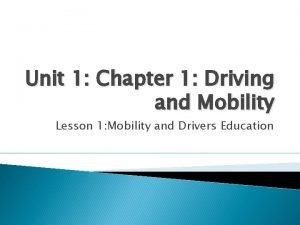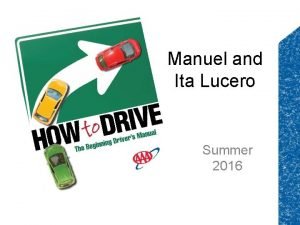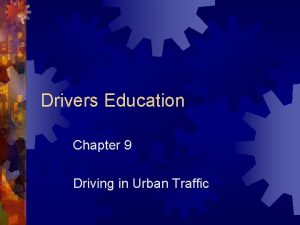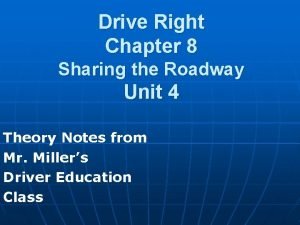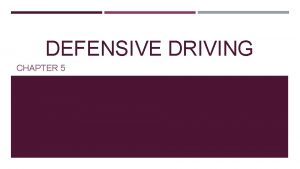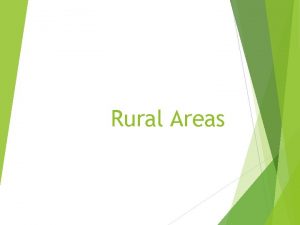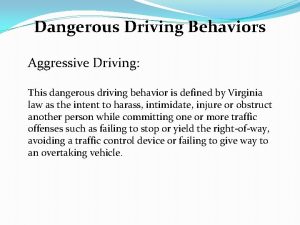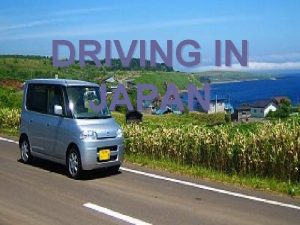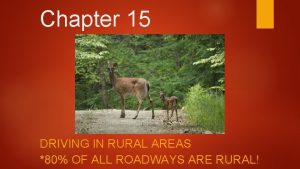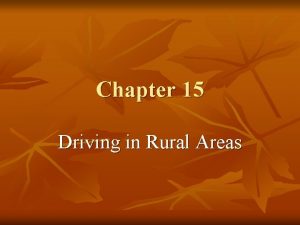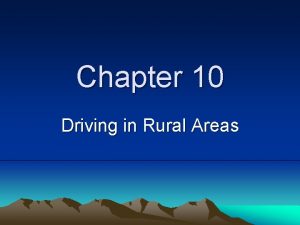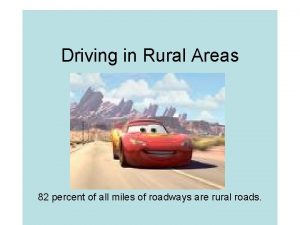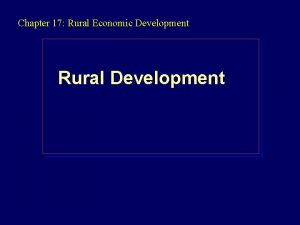Chapter 15 Driving in Rural Areas What is














- Slides: 14

Chapter 15 Driving in Rural Areas

What is a Rural Roadway? n n Any roadway that has wide open spaces and less traffic are considered rural roadways. Rural roadway collisions account for nearly 2 x’s the amount of deaths than urban collisions.

Speed n Major factor in rural driving collisions. n Affects the following: n n Line of Sight Stopping Distance Vehicle Control Amount of Damage and Injury in a Collision

Traffic Controls n n Signs, Signals, and Roadway Markings Alert you to the following: n n Hazards you can’t yet identify Major intersections ahead Unusual or hazardous conditions Traffic channeled into reduced space

Facts and Figures for Rural Roads n n Vehicles leaving the road and hitting a fixed object account for 1/3 of all motor vehicle deaths. Most of these involve a single vehicle. Approximately 42% of all roadside deaths occur on curves. About 1/3 of all roadside collisions involve vehicle rollovers and 1/3 involve occupant ejections.

Driving on Two Lane Roads n Things to consider: n Curves n n n Advisory Speed Limits Hills Intersections

Following Distance n Rural settings that need increased following distances: (greater than 3 seconds) n n n n Being tailgated Downhill slope Following motorcycles Following snowplows Pulling a trailer Following a large vehicle (truck, RV, bus) Wet/Icy road conditions

Multilane Rural Roads n Entering a multilane road: n n Check target area and front zones. Enter nearest lane in your direction Accelerate to the appropriate speed. Remember a left turns requires a larger gap in traffic than a right turn. (the more lanes you cross the larger the gap you need)

Video Segment n The IPDE process in Rural Areas

Passing n n When deciding to pass consider: n n Is it worth it to pass? Is it legal to pass? Is it safe to pass? Remember passing does not give an exemption to the speed limit!!! No-passing Situations: n n n Uphill road Intersections Within 100’ of RR On a 2 lane bridge. Curves Vehicle ahead traveling at speed limit Line of sight is restricted More than one vehicle ahead When approaching a no-passing zone When oncoming traffic is too close When you will be turning or stopping soon

Slow Moving Vehicles n n SMVs are identified by the orange triangle with red border Video “In the Blink of an Eye” (might want to take notes b/c you may see some of this on a quiz)

Animals n n Anticipate more than one animal Evaluate front zones for line of sight restrictions and other animals Check rear zone to make sure if is safe for you to slow/stop quickly Check left-front and right-front zones for escape route

Separating Hazards n Adjust speed n Meet where the most space is available n Change lane position to create more space

For Quiz n Should be able to: n n n Explain the features of a rural roadway List what roadway markings and signs alert drivers to (4 things) Define Advisory Speed Limit Explain how to enter a multilane road List 7 of the 11 No passing situations
 Chapter 10 driving in rural areas worksheet answers
Chapter 10 driving in rural areas worksheet answers Chapter 15 driving in rural areas
Chapter 15 driving in rural areas Rural areas have of development drivers ed
Rural areas have of development drivers ed Chapter 10 driving in rural areas worksheet answers
Chapter 10 driving in rural areas worksheet answers Difference between urban and rural
Difference between urban and rural Usda approved towns in massachusetts
Usda approved towns in massachusetts Chapter 9 agricultural transformation and rural development
Chapter 9 agricultural transformation and rural development Chapter 9 agricultural transformation and rural development
Chapter 9 agricultural transformation and rural development Crash costs are measured in dollars and in
Crash costs are measured in dollars and in Chapter 1 managing risk when driving
Chapter 1 managing risk when driving The space between traffic clusters is called
The space between traffic clusters is called Use the driving in city traffic terms
Use the driving in city traffic terms Alcohol is the most commonly used drug in our society
Alcohol is the most commonly used drug in our society To protect a tailgating motorcyclist
To protect a tailgating motorcyclist In extreme cases an aggressive driver may
In extreme cases an aggressive driver may
